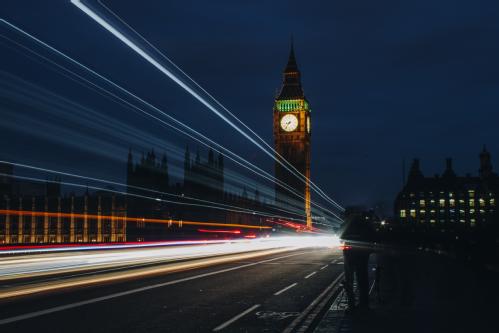Option Module: The Global City
 The Global City is now a broad discourse that involves policy makers, city politicians, urbanists, cultural researchers, architects and artists, designers and media entrepreneurs. Why is it that the world's major cities have become the places, sites and platforms for the world's most important cultural (and social) innovations?
The Global City is now a broad discourse that involves policy makers, city politicians, urbanists, cultural researchers, architects and artists, designers and media entrepreneurs. Why is it that the world's major cities have become the places, sites and platforms for the world's most important cultural (and social) innovations?
Moreover, during the last decade or more every major city is now employing 'cultural' policies for urban economic and social development - creative industries, creative city, cultural city, media city, smart (sustainable) city, cultural quarters, public art, contemporary art biennale's, festivals, city brands, are now all common terms for city policy makers. Competition between cities within the global cultural tourism arena is now rife and intense. The city has become an experimental laboratory for cultural policies, both explicit and implicit, but is also generating profound problems on the 'instrumentalisation' of culture. Can we really use culture and the arts to make a 'place' more socially and economically productive?
The Global City discourse is interdisciplinary and involves crossing the fields of cultural policy and cultural politics, cities and urban policy, urban geography, creative economy and entrepreneurship, and International Development. The latter of these, International Development, is the framework adopted by this module, particularly where development policy and theory has been generated through cultural policy, cultural rights and creative economy frameworks. What does it mean to call a city 'creative', and how does creativity actively 'develop' a new kind of city, active citizenship, exciting public spaces, artistic enterprises, design, fashion and media? What does this mean for megacities or slum cities with few resources and huge political or social challenges? This module will explore global urbanisation, how cities have change, and how the arts and culture are being employed all over the world in 'developing' new kinds of cities.
This module is field-work based (with eight weeks in London), over half is directed by the module tutor and the rest indepdendent student group work.
Illustrative Bibliography
Anheier, H. and Isar, Y.R. (2012) Cities, Cultural Policy and Governance (The Cultures and Globalisation series), London: Sage.
Brenner, N. (ed), Keil, R. eds. (2005) The Global Cities Reader, Routledge. Cambridge: The Polity Press.
Carmona, et al. (2006) Public Places Urban Spaces, Oxford: Architectural Press.
Davis, M (2006) Planet of the Slums, London: Verso
Florida, R. (2002) The Rise of the Creative Class. And How It's Transforming Work, Leisure and Everyday Life, New York: Basic Books
Fox, S. & Beall, J. (2009) Cities and Development, London: Routledge
Harvey, D. (2012) Rebel Cities: from the right to the city to the urban revolution, London: Verso
Koonings, K. and Kruijt, D. (2010) Megacities: The Politics of Urban Exclusion and Violence in the Global South, London: Zed books
Kraas, F.; Aggarwal, S.; Coy, M.; Mertins, G. eds. (2014) Megacities: Our Global Urban Future (Series: International Year of Planet Earth), New York: Springer
Landry, C. (2009) The Creative City: A toolkit for urban innovators, Comedia/Earthscan
Miles, M. (1997) Art, Space and the City, London: Routledge
Mulder, A. et.al. (2002) TransUrbanism, Rotterdam: V20 Publishing
Sassen, S. (1991) The Global City: New York, London, Tokyo, Princeton University Press
Short, R. (1989) The Humane City: Cities as if People Matter, Oxford: Blackwell
Theobald, W. F. (2001) Global Tourism (2nd edition), Oxford: Butterworth-Heinemann
UN: Rabat. UN-Habitat (2013) I’m a City Changer in Africa, Nairobi: UN-Habitat
UN-Habitat (2013) Time to think Urban, Nairobi: UN-Habitat.
